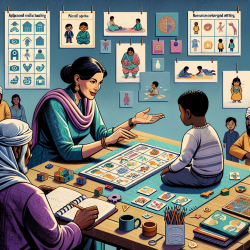In the realm of special education, understanding the impact of dialects on students' learning experiences is crucial. The book "Dialects In Schools and Communities" by Walt Wolfram, Carolyn Temple Adger, and Donna Christian provides valuable insights into this topic. This research offers a comprehensive synthesis of current understandings and highlights the educational implications of dialects, making it a must-read for educators, speech-language pathologists, and special education professionals.
The book is divided into eight chapters, each addressing different aspects of dialects and their educational impact. The initial chapters provide background information on language variation and specific dialect structures. Subsequent chapters delve into communicative interaction patterns and the misconceptions that equate language differences with deficits.
Here are some key takeaways from the book that can help practitioners improve their skills:
- Understanding Language Variation: Recognize that dialects are natural and normal variations of language. This understanding helps in avoiding biases and misconceptions that can negatively impact students.
- Educational Impact: Be aware of how dialects can affect reading and writing development. Tailoring instruction to accommodate these differences can enhance learning outcomes.
- Best Practices: Implement best practices for teaching standard English while respecting and valuing students' native dialects. This dual approach can foster better communication and learning.
- Inclusive Environment: Create an inclusive classroom environment that respects linguistic diversity. This can reduce inequities and improve student engagement and success.
By integrating these insights into their practice, educators can create a more equitable and effective learning environment. Additionally, further research into the educational impact of dialects can provide even deeper insights and more refined strategies for addressing this important issue.
To read the original research paper, please follow this link: Dialects In Schools and Communities (199)










